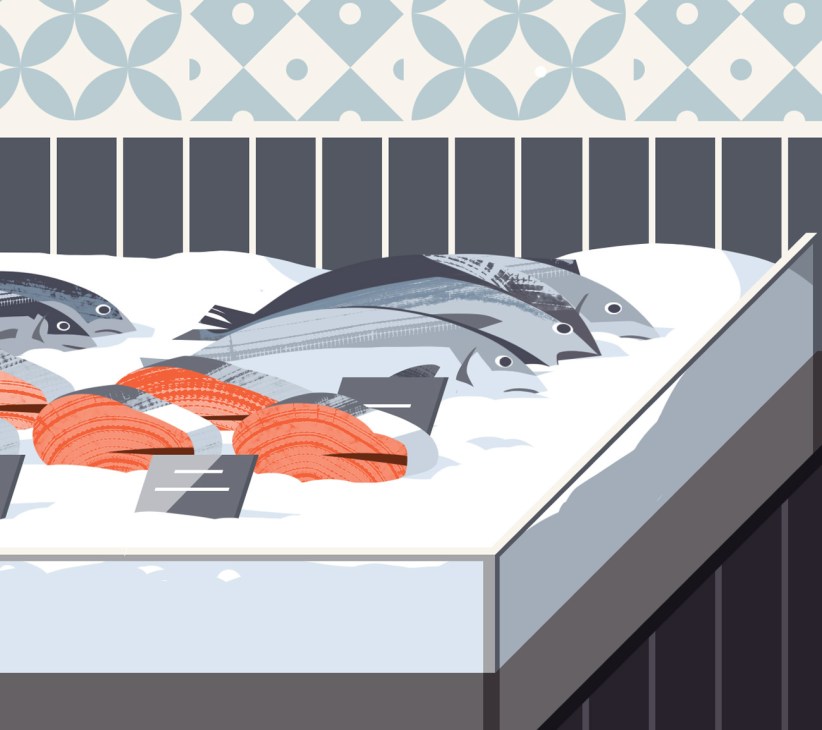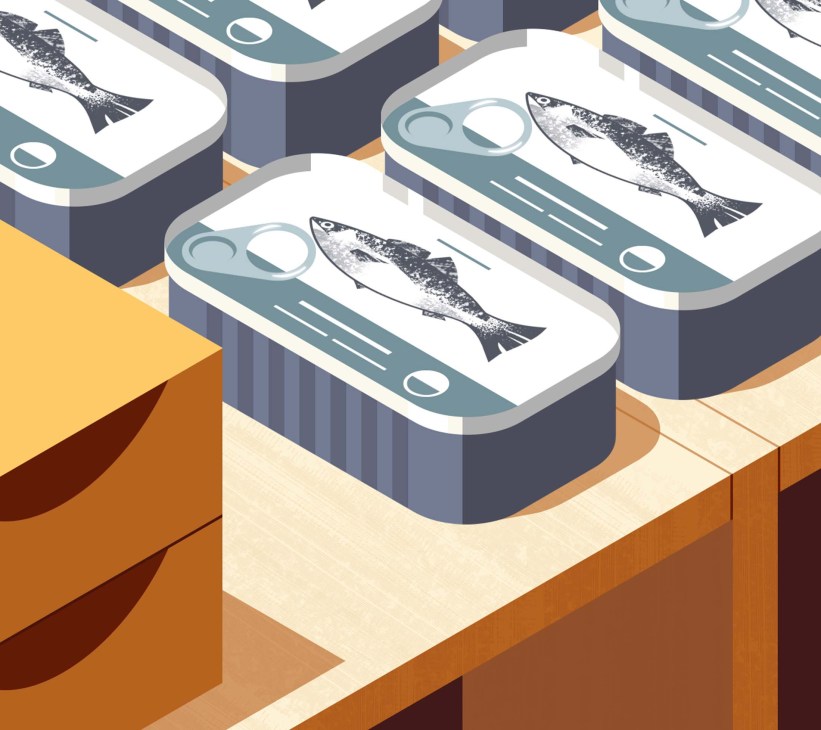Supermarkets have lost their charm. How can we make them better?
From saying no to self-checkouts to getting the right lighting, Monocle’s 10-point plan details how to make them feel inviting again.
At their best, grocery stores are engines for neighbourhoods and platforms for smaller, honest and interesting businesses. By stocking great produce, they boost cottage industries, help local farmers and artisans while delivering the best options for their customers. An excellent grocer’s offers a place to meet, ideally with a café for mingling. Good ones are also sensory experiences. Great ones combine familiarity and personal service.
Sadly, many supermarkets have become utilitarian and samey – even dystopian in the impersonality of their self-checkouts. Monocle has written about retail since we launched more than 18 years ago. We also have shops and cafés that show how we like to do things. So let us share some ideas about a shopping format that’s ripe for reinvention.

1.
Work from the ground up
Do away with drab grey lino-like floors or pebbledash plastic and opt for a material that speaks to the calibre of what’s for sale. At Paris’s La Grand Epicerie Rive Droit, a masterclass in food retail owned by luxury group LVMH, there are heavyset stone tiles in the fromagerie, wooden parquetry in the delicatessen and luxurious marble in the ready-made section. The fishmonger is a mosaic-filled tribute to the sea’s bounty.
Together, these combine to create the atmosphere of a department store for delectables that invites shoppers to stay, browse and pick up a few treats (bonus: it’s also easy to clean if there are spills). For more inspiration, look to Grandiose, a chain of supermarkets in the uae, which also uses different flooring to frame its products by type and region.

2.
Hire a shop-friendly architect
From the height of the shelves to the clarity of the signage, supermarkets need to be functional in design. But they can also draw on a few ideas from luxury retail spaces, such as the use of natural light and the flow through the space. (See the work of Los Angeles and Lausanne-based architect David Montalba.) MPreis’s timbered Tyrolean headquarters, for example, are an aesthetic homage to the region’s lush woodlands, which are a strong source of regional pride.
And it’s not just the produce that the Austrian food retailer goes to great lengths to source from the surrounding alpine resorts; the design of MPreis’s supermarkets is deeply rooted in Tyrolese culture and craft of its native Innsbruck. Pür Sudtirol also shows how to succeed on a smaller scale.

3.
Get the light right
Remember that you’re selling food and do away with harsh strip lighting reminiscent of a dentist’s office. Prioritise warmer tones overhead and gentle spotlights that compliment a sense of discovery by leading customers to new finds. US firm Erewhon is the master of using light to imbue a sense of preciousness: shoppers at its stores are greeted by pyramids of brightly lit produce that can transform a green apple or a blushing tomato into something precious.

4.
Stack the shelves in style
Fukushimaya Tasting Market worked with Tokyo-based Landscape Products to create pantry-like wooden shelves in its Shibuya shop: these emphasise the cottage-industry origins of its small-batch producers.
For larger stores, look to the sturdy
wooden shelves at Harris Farm Markets in Sydney, while Yaoya a French-Japanese neighbourhood grocer in Guethary, France, presents its wares on blonde woods, wicker baskets and farmyard crates to great success.

5.
Tell a story with products
Madrid’s specialist food retailer Petramora keeps it in-house with a line of products from its own flock of Churra sheep, which tell a story about its connections to the Spanish countryside. Seek out producers who speak to your brand; think of them as collaborators, not “own-brand” products (this way you can also see how they sell before committing). The Herkku classics sold at department store Stockmann’s market hall in Helsinki is a case in point and has become a mark of quality.

6.
Be selective, not exhaustive
Choose products with excitement and delight – but stock selectively and consider quality control. Italy’s Esselunga leads the way with its in-house sommelier service, which advises on the best sancerre to pair with sea bass and can be relied upon for finding one-off bottles for a dinner party. When Michael Käfer founded his eponymous Munich-based market and restaurant, he made sure to be involved in selecting the products that made it to the shelves.

7.
Pack in style
Wanzl has been the go-to Bavarian builder of hardy shopping baskets and metal trolleys for more than a century. But for a personal roller with grace, Perigot’s lightweight “trolley market” consists of two removable baskets that slot elegantly into a sleek black frame. Meanwhile, Rolser has been building zippy shoppers in Alicante since 1966. Its Plegamatic trolley, which can be folded to the size of a tote, was once a fond fixture of small grocers across Spain.

8.
Play an original soundtrack
Don’t subject shoppers to faded floor-fillers or fuzzy radio stations. Central Market by Texas’s heb Grocery is known for its soundtrack. Expect lesser-known B-sides, up-and-coming acts and deep-cut hits rescued from the archives. Music can improve your mood and offer customers a few ideas to freshen up their own playlists. Central Market’s flagship supermarket in Austin even has a patio where (decent) live bands play through the week.

9.
Say no to self-checkouts
Automated checkouts have become an unexpected nightmare in the bagging area. They snarl up the aisles as machines go bust and queues snake through the shop, and lead staff to bark at customers as machines become available. The setup has veered away from its promised ease and efficiency. Sensible supermarkets are going back to basics: Booths, a high-end grocer in the UK, has done away with self-checkouts. Good service is still the best solution.

10.
Welcome the weekly shop
Daily – and weekly – essentials must come first. Some shops have an exhaustive collection of olive oil but don’t do decent chopped tomatoes. Butterfield Market in New York and Kinokuniya International in Tokyo have remained in business so long because they know what shoppers want. Maybe being the only shop in town that sells a rare manuka honey will draw a few, but being a neighbourhood staple means being dependable about your stock too.
Illustrations by Donghyun Lim


